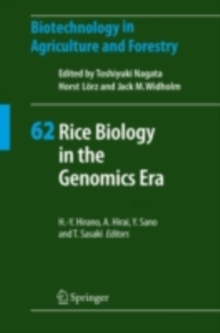
Cotton : Biotechnological Advances PDF
Edited by Usha Barwale Zehr
Part of the Biotechnology in Agriculture and Forestry series
Description
The food, feed, ?ber, and fuel needs of the changing world pose the challenge of doubling or tripling of world food, feed, and ?ber production by the year 2050 to meet the needs of a 11 billion global population.
In addition, the dramatic changes in food prices in the recent years further warrant that production and productivity need to be enhanced to ensure adequate supplies.
Biotechnology can make a signi?cant contribution to this effort as demonstrated by cotton and other crops; the new advances in biotechnology have made it possible to develop plants that contain genes that were not possible to be developed by sexual means.
Cotton has been a leader in the use of biotechnology.
With the introduction of Bt cotton, followed by stacked cotton products (insect and herbicide tolerance) and extensive use of molecular breeding tools, cotton cultivation has been much improved.
The contributions in this book illustrate the scienti?c advances that are going on in cotton and the impact they continue to deliver for all cotton growers.
Twelve percent of the global cotton area is now under biotech products at 15. 5 million ha. The primary bene?ts from using genetically engineered cotton include reduced insecticide use, lower production costs, improved yields, lower farming risks, and increased opportunities to grow cotton in areas of severe pest infestation.
Information
-
Download - Immediately Available
- Format:PDF
- Publisher:Springer Berlin Heidelberg
- Publication Date:13/01/2010
- Category:
- ISBN:9783642047961
Information
-
Download - Immediately Available
- Format:PDF
- Publisher:Springer Berlin Heidelberg
- Publication Date:13/01/2010
- Category:
- ISBN:9783642047961










